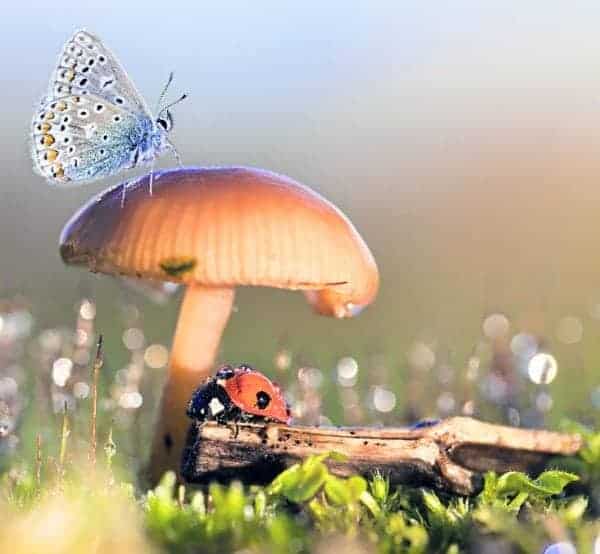It might be too early to officially declare this year “The year of the Shrooms” but it is certainly shaping up to be that way.
After all the rain we gotten, the mushrooms are popping up all over the place. In a few days a few days I counted five different species of mushrooms in the bush, with more to follow I am sure. The mosses, ferns, horsetails and lichens are also busily growing. It hasn’t been this green in the north in years and our northern dessert is very arid.
With mushrooms, the part sticking above the ground, that we call mushrooms, are actually the sex organs of fungus. Most of the fungus exist underground as thread like hyphae which form a mass called the mycelium. So once a good mycelium has established itself in an area, every year when it gets really wet it sends up the mushroom to create spores and procreate. That is why the same type of mushrooms will often appear in the same area year after year and why you often get several of the same species sticking up close together.

In fact, the largest known organism in the world is a mycelium bed covering 2,385 acres in Oregon of the species Armillaria Ostoyea, nicknamed the Humongous Fungus. There may be a bigger mycelium existing somewhere else on the planet but for now that is the world record. So, the biggest living thing on the planet is not a mammal or in the past a dinosaur, but a fungus.
Who knew?
Fungus aren’t plants, nor are they animals. They are a whole other class of living things and without them live on this planet, as we know it would probably cease to exist, except for perhaps some bacteria and a few microorganisms. Not only are fungi a fascinating life form but they have an interesting history that humans are only starting to piece together.
For some reason many humans believe that the way the world is today, is the way it has always been, and it is the way it will always be. Then in their folly they sometimes try to stop anything from changing. Unfortunately for them, the world is always changing and evolving.
Let’s take a quick trip back on the geological time scale. In the last two million years we have gone through approximately ten ice ages each lasting around 100,000 years. We are currently in an interglacial period that probably wont last. Before then there were no ice caps at the north or south pole. We can go back further through the time of the dinosaurs. Back to a time before there were most of the plants and trees we know today. Back to a time when there was life in the oceans and it was just starting to appear on land.
Lichens, liverworts and yes even fungi were the first to appeared on land. In 1843, John William Dawson, a Canadian paleontologist, was working on the shores of Gaspe Bay in Quebec. He came across some remarkable fossils.
They were spires a metre across at the base and up to 8.8 metres tall. He named them prototaxites. Since then they have been found in the fossil record around the world dated to between 430 and 360 million years old. A debate raged for years at just what they were until a consensus was reached among the experts “Holy Molly, these things were giant fungi.”
They must have towered above all the other plants on the surface of the planet, but why they grew like that, is still a mystery. These things were a little like tree trucks so got preserved but what about the smaller fungi? Were they giants as well and are the fungi and mushrooms we see today just miniature forms of them. Every time I see mushrooms I try to imagine what their giant ancestors must have been like. Mushroom ten, twenty, 30-metres tall.
They certainly exist in my imagination and they certainly may have existed in the past the problem is soft bodied mushrooms would fossilize well but. maybe someday they too will be discovered in the fossil record. Just imagine a fossilized puffball 10 metres across.
Who knows? If it continues to rain like it has been, we may get to see the return of the giant 'shrooms and get cranberries the size of baseballs. Now would that be something to see.